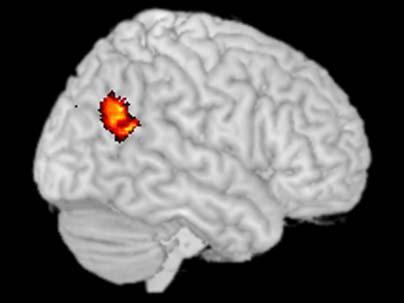Looking for your inner child?
2 april 2010 | In Moral Psychology Neuroscience | Comments?
In a paper published in PNAS a few days ago (Disruption of the right temporoparietal junction with transcranial magnetic stimulation reduces the role of beliefs in moral judgments), a fairly interesting experiment was reported by authors Young, Camprodon, Hauser, Pascual-Leone and Saxe: By using transcranial magnetic stimulation (TMS) to disrupt neural activity in the right temporoparietal junction (RTPJ), they managed to influence participants moral judgments in a revealing manner. Normally, we judge the moral status of an action to be dependent on the mental state (belief/intention) of the agent. But disrupting this particular area (on independent grounds believed to be responsible for judging mental states of others, changed this, and the moral judgment of the action tended to become more a matter of judging the effect of the action. In this case: trying to poison someone, but failing was not condemned as impermissible, since the would-be-victim was, in the end, alright. The moral judgment was given on a questionnaire and on a scale from 1 (forbidden) to 9 (permissible).
Belief attribution is an integral part of normal, grown-up, moral judgments. To disregard the intention and focus solely on the result in every kind of moral judgment is, however, often the moral strategy of children up to the age of six.
What’s exciting about this? Initially? Not much that wasn’t fairly common sense to begin with: if you disrupt an area of the brain responsible for judging intentions, then you disregard intention when forming your moral judgment. What’s noteworthy in is that people keep making what they take to be moral judgments, even when this arguably central feature of moral judgments goes missing.
Note that the scale used is whether the act is forbidden or permissible, not whether it is good or bad. There are difficulties here, and the authors does not justify their choice of words. Presumably, it should be forbidden to intend, and try, to poison someone because trying sometimes lead to success, people get poisoned and that’s bad. But that’s not exactly the question posed in this experiment – it seems to be whether it’s permissible to intend to poison someone and fail. ”No harm” as someone so fittingly put it ”no foul”. That’s hardly being immoral, it’s rather being attuned to the artificial nature of the scenario.
Unfortunately, the paper does not say whether the participants where also asked to justify their judgment. This is clearly a relevant thing to study here: both while still under the influence of the TMS, and afterwards. Would they find a way to morally justify their judgment, however far fetched (as would perhaps be suspected, by the kind of post-hoc justification explored by Jonathan Haidt), or would they state that they must have been temporarily insane.
While not exactly a groundbreaking piece of work, and there are questions left open, it is certainly the kind of gentle probing of the brain we should be doing to find out how it works its way around morals.